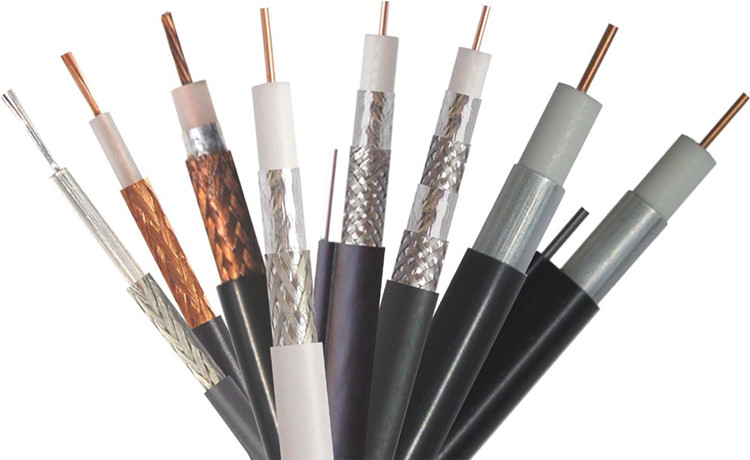- All
- Product Name
- Product Keyword
- Product Model
- Product Summary
- Product Description
- Multi Field Search
Views: 62 Author: Site Editor Publish Time: 2020-04-06 Origin: Site
What is coaxial cable and how is it used?
Definition of Coaxial Cable
Coaxial cable is commonly used by cable operators, telephone companies, and internet providers around the world to convey data, video, and voice communications to customers. It has also been used extensively within homes.
It has been around for a long time as a technology (since the early 20th century) and has many singular advantages for reliable, accurate transmission.
It also has limitations that will cause it to be replaced in some cases by fiber optic cable, category cable or, sometimes, by wireless signals.
The key to the coaxial cable's success has been its shielded design, which allows the cable's copper core to transmit data quickly, without succumbing to interference or damage from environment factors.

The three most common cable sizes are RG-6, RG-11 and RG-59:
RG stands for "radio guide." The numbers of the various versions of RG cable refer to the diameter (59 meaning .059, and 6 meaning .06, etc.). They are also called RF cables, which stands for "radio frequency".
Most non-industrial coax is now known as RG-6, but installers may use a thicker cable, like RG-11.
RG cables used in homes should be 75 ohm impedance.
Coaxial Cable Structures
Coaxial cable is a type of cable that has an inner conductor surrounded by an insulating layer, surrounded by a conductive shielding. Many also have an insulating outer jacket The diagram below illustrates the construction of a typical cable. Electrical signal flows through the center conductor.

1.Center conductor - copper-clad steel.
2.Center conductor bond - clean stripping polymer is utilized to block moisture migration.
3.Dielectric - polyethylene providing mechanically stable, closed cell foam with high VP.
4.First outer conductor - shield with an aluminum-polymeraluminum tape securely bonded to the dielectric core.
5.Second outer conductor - an additional aluminum-polymer-aluminum tape is used in tri-shield and quad-shield constructions to further enhance HF shield isolation before and after flexure.
6.Third outer conductor - an additional aluminum-polymer-aluminum tape is used in tri-shield and quad-shield constructions to further enhance HF shield isolation before and after flexure.
7.Fourth outer conductor - an additional 34 or 36 AWG aluminum braid is used in quad-shield constructions to further improve LF shield isolation in extreme RF noise environments.
8.Corrosion resistant protectant
8.1.Indoor and aerial - a non-drip material designed to eliminate moisture migration into the cable construction.
8.2.Underground - a flowing compound able to seal small jacket ruptures.
9.Jacket - a UV stable outer jacket of either polyethylene (PE) or flame retardant polyvinyl chloride (PVC) is available to protect the core during installation and for the installed life of the cable.
10.Integral messenger - a galvanized, carbon steel wire support member attached to the cable by a separable web.
Which is better: coaxial cable or fiber optic cable?
Both of these types of cable can be used for carrying video, audio, and other forms of data, and both can offer you distinct advantages and disadvantages in setting up your network.
Deciding which is best for your situation depends on the distance of your connection and the amount of data you will send. Fiber optic cables carry a signal for several miles before needing a repeater. Signal losses are higher in coax cable, so you should use it for shorter distances. Fiber optic cables carry far more information. Fiber optic cable is also significantly more expensive. Fiber optic cables are found less frequently in residential and consumer settings than coaxial cables.
Coax cables are easy to install and very durable. Because fiber has higher and faster data transfer than coax, they are best used for professional networks, such as those found within a business campus or university. If you are working on a home installation or medium-capacity data transfer network, then you'd probably be better off sticking with coax cable.
Many of today’s companies use cable connections for their business broadband service. Cable internet's biggest drawback is speed fluctuation. Looking again to fiber internet vs. cable internet, cable internet service is usually shared among a number of subscribers. This means if there are a large number of users in a cable region all running bandwidth intensive applications using the internet at the same time, everyone's speeds can vary between 100% and 25% of the promised speed.
As far as the cost of fiber vs. coax goes, fiber is typically much higher upfront. After installation, the pricing for dedicated internet access over fiber will also be higher than a shared cable internet connection.
Posted by Krista Tysco (https://www.ppc-online.com/blog/what-is-coaxial-cable-and-how-is-it-used)